Don't wanna be here? Send us removal request.
Text
Amanda Valentine
I first saw Valentine, the runway collection by Amanda Valentine at the 2012 Lexus Nashville Fashion Week. I remember the shimmer of each delicate piece of clothing as it flowed off the slim body of model after model down the t-shaped runway. The metallic panels of skinny black leather pants. The golden shimmer of a metallic cape and matching cropped skinny pants. The iridescence of a shiny A-line midi skirt. The collection was like a shining, shimmering dream. That was Valentine—that was Amanda Valentine.

Image via
Just a year later, I wanted to catch up with Amanda Valentine to see what she’s been up to since her collection awed and inspired the fashion insiders of Nashville. Amanda's designs have been featured all over the country and she was featured on the hit show, Project Runway. “I really always knew I would work in fashion.” Amanda told me. She grew up in a small town in Nebraska (not unlike my own struggles of growing up in Northern Illinois) where there was not a lot of direction guiding fashion hopefuls on how to get their foot in the door. She recalled subscribing to Vogue when she was just 12 years old, looking to the sprawling, colorful editorials for inspiration. By the time Amanda was in junior high, she discovered her knack for designing. Around the same time that she had found solace in a Vogue issue, she started sewing as a child. Her mom was “always working on something—clothing for Amanda and her siblings, a quilt, or something around the house.” That’s how she learned and honed her craft. Starting out that young, Amanda got a head start on learning the basics so when by the time she got to junior high school, she was playing with patterns and making her own prints.

Image via
It’s always interesting to see how a designer that starts at a young age can grow exponentially in just a few short years—they can take something and run with it, and that’s truly inspiring. Amanda told me that “the design process is her favorite—it’s the sewing part that she struggles with at times!” Finding inspiration can often be hard for any artist or creator, but Amanda let me in on where she often finds the things that give her those golden new ideas. “I usually start with inspiration from a band or type of music I’m listening to, and essentially try to come up with a look that matches it.” Music. Something that can connect us all and inspire us individually in different ways. Amanda says that for her, “it’s always music.” Not only this, but she also loves studying how countercultural movements dressed—be it the punks of the ‘70’s, club kids from the ‘90’s, or the flappers from the ‘20’s—that costume history is so fascinating to her. I personally admire how Amanda can take something as broad yet culturally defining as a single era, and recreate it through her clothes to give it new meaning.
Moving away from what inspires her designs, I was curious to know more about what inspires her locally with the Nashville artisan fashion scene. Just as many other designers, she agrees that the Nashville “scene” is so supportive. Designers are constantly collaborating and working together to promote community, which is often a rare jewel to stumble upon in this particular industry. What makes Nashville special is that there is this willingness to be a part of a larger movement of creators and makers, rather than working to tear down the competition. One interesting thing she told me that I hadn’t yet heard before is about that “Nashville look” that I’ve mentioned before. She thinks that “the only problem is that people think of a certain style when they think of Nashville, when really, we are so much more diverse than outsiders would expect.” I can attest to this fact myself. Wouldn’t that be great? To have people see Nashville as more than this “modern-hipster-nized” mecca? With the fashion scene growing though, this utopia may not be far away.

Image via
As for Amanda’s future, she will continue to design and expand and work on designing truly amazing pieces. As for my future? Amanda gave me this bit of advice: no matter what you do, you have to create your niche and develop you voice; end in the end this will set you apart.
#amanda valentine#valentine valentine#design#fashion#nashville fashion week#nfw#interview#journalism#style#photography#models
1 note
·
View note
Text
On The Handmade Movement: Annie Williams
“In high school I made a dress out of jeans, and it was so…bad. I couldn’t even walk in it; it was just horrible.” We all have to start somewhere—this was one of Annie’s struggles when embarking on the path to designing, but looking at it from a different perspective, you could call it a small triumph. No matter what it is we do or how we get to our end destination, the majority of our triumphs come from us failing once before. I had the opportunity to sit and chat with Annie Williams at Crema (the same place where I met with Libby) while we sipped lattes and enjoyed the warm and cozy atmosphere on that chilly morning. During out chat, Annie told me about the struggles and triumphs that come with the level of success she has obtained.

Annie Williams is the creator of a unique collection of handmade leather goods that are made so carefully and meticulously, that their quality and worth are far greater than anything you could pick up at the closest Zara or H&M. Her namesake line, Annie Williams, was created in 2010 when she bought a full hide and made her first three sales—this was one of her first successes.
She started sewing in college. As evidenced from her anecdote about a sewing project gone wrong, Annie began experimenting early on. She took her passions for sewing and singing to Wyoming where she attended college but ultimately found herself back in Nashville to record and sing. It was also around this time that Annie learn to sew industrially—which unbeknownst to her at the time was a skill that was widely uncommon (and reversely very useful in that respect). She took up a number of odd jobs to get by and was ultimately forcing herself to design; at each job she learned a new invaluable skill. Annie told me that she loves the “mystery of not knowing until you get there and you can’t see the top” when you’re working on a project. It struck me as an interesting point. Think about your everyday struggles—isn’t it true that often, we don’t know our full potential until we get to the other side? She admitted that this is often one of her greatest struggles when starting anything new. In the design process, there may come a few times where you doubt yourself and this can keep you from reaching your true potential. However, if you’re like Annie, you will always find a way to work through these self-doubts—to overcome this struggle. This amazing quality about Annie made me realize that she is of a kind in her niche. She understood that you have to sometimes work hard, and do the jobs others may not be willing to do, in order to truly succeed.

After a few years of success Annie Williams’ business is thriving. She has collaborated with Han Starnes, and expanded her product line—there’s no sign of her stopping. Annie told me that she loves the Nashville artisan design scene for similar reasons as Han and Brooke pointed out. “There’s both a good and a bad side,” she admitted, “there’s competition, but it’s competition to push yourself…and you can feel like Nashville is the ‘end all,’ but there are always people who want to work together.” This is one of those celebrated successes that Annie has. She has been able to find a way to balance her inner self-doubts while also staying humble to herself and to her brand. In doing so, Annie has become quite the success story, and I admire that so much about her.
At this point in our conversation, we moved away from talking about Nashville to talking a little more about her inspiration and what’s up next for her. Nature is her main inspiration. It’s the thing that surrounds us yet if we get too busy, we have the tendency to forget it’s there. Annie has such a love for nature that it resonated in her voice and the way she told her story. I found myself getting chills on my arms when she told me about her trips that she takes with her husband, hiking for miles and “getting lost” in the elements—in the best way possible. She strives to translate those feelings of feeling a part of something bigger than yourself, just being out in nature, into her designs and her creations. She wants everyone to feel like these things are simple and natural, just as the way being away from the hustle and bustle of everyday life can make you feel.
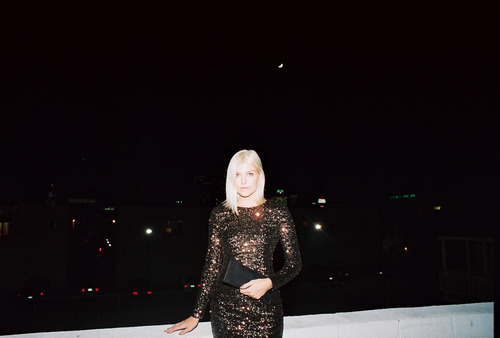
“I feel really lucky,” she told me. She has so much going for her right now, and even though I just met Annie, I found myself rooting for her success. Talking to her was like talking to an old friend, and it was quite refreshing. Annie is hoping to make her business more practical as she comes up with a staple line and to get more organized. She is going to continue to grow and have the freedom to design on her terms. She left me with this advice: “A sense of self is the strongest thing you can have in this industry.” Have opinions, know what you like (even if that changes), and be in tune with who you are. This is the key to overcoming the struggles and finding success.
All Photos via AnnieWilliams.com
#annie williams#leather movement#fast fashion#fashion#designer#spotlight#leather goods#style#blogging#journalism#interview#photography
0 notes
Text
The Movers and the Makers: Brooke Hagaman
“It was in eighth grade. Summers out of school my mom would find things to keep me busy. She had an old Singer sewing machine…and she just started teaching me how to sew.” The first thing Brooke made was a Vogue pattern that she bought and it took her a few weeks to finish. “It was hideous,” she recalled, as we sat in her studio full of samples and sewing machines, leather pieces and products. The light shone in from the wall of windows lining the room; it was such a nice pleasant place to chat. I sat with Brooke on a rainy Saturday morning to chat about her line of swimwear, Bone Feather, and her view of the Nashville artisan fashion scene.

After learning the basics of sewing, Brooke got into textiles. She told me that “she never really thought about what she wanted to do, but loved clothing and textiles.” Brooke’s college experience was a little different than some. The summer of her sophomore year, she had the opportunity to take a 6-week intensive course about the design process from Parson’s. While the program did not involve the actual creation of clothes, Brooke learned the basics of taking an idea from start to finish. She came back from this course with new knowledge, and a new passion. It’s experiences like these (and I’ve had some great internship experiences I can attest to as well) that truly make working towards your final goal worthwhile. Even though she didn’t learn about the actual designing, the skills she learned are invaluable and have truly helped to launch her into the world of fashion as both a designer and a business savvy woman. After finishing her degree, Brooke returned to Nashville, where she’s originally from.
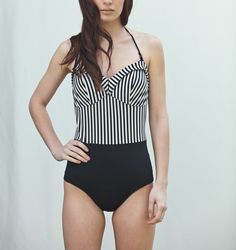
One of the key elements that won Brooke over was the fact that Nashville was new and affordable. “The thing about fashion,” Brooke told me, “is that you don’t have to live in New York to make it big.” This statement truly struck me because it’s such a simple concept that many aspiring-fashionistas tend to forget. New York is the only place where everything happens. Look to Dallas, Austin, Seattle, Nashville, and Chicago—all of these places are thriving with fashion scenes that are on the rise. “I can build my name up here instead of fighting against the grain in New York.” So Brooke was in Nashville. As for the swimwear line, she was searching for this bathing suit for a trip to Mexico and she found a need for her product in the market. There was nothing in between a string bikini and a grandma “onesie” as she called it. The bikini she made as a result was a hit. While interning for Manuel, which again just strengthens that crucial need for internships, she then put together 15 pieces or so and showed the line at the first Nashville Fashion Week, which I attended. I love that with Brooke, while there is intention, and passion, she really didn’t have a clear-cut idea of what she was going to do with all of her skills and talents, and everything fell together. That’s one of the most important things that I took away from chatting with her—it’s okay not to have a finite plan and blueprint for what you’re going to do in life, things will work themselves out.
From where she started just a few years ago to now, Brooke has refined her line and her mission. She also has started a line of leather handbags which, to her, “really gives her that hands-on feel” and the whole idea of things being American-made and hand-sewn. Just like with Han, Brooke is a believer in the artisan spirit and this movement that involves eliminating the larger manufacturing process, she love the hands-on aspect.
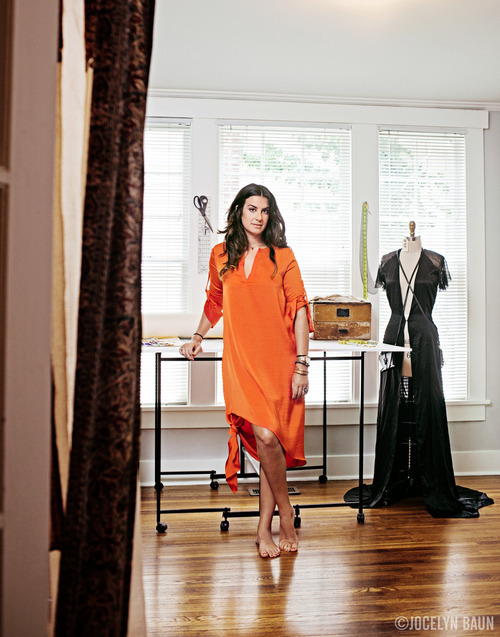
Looking to the future, Brooke hopes to maybe get into leathers with clothes such as jackets and capes. “In order to do something super creative you have to know what your niche is.” I love this and it’s some of the advice that really stuck with me. Knowing your niche is all about knowing what your skills are, what your passions are, and what you can do with them. So as I mentioned before, it’s okay to not know your final destination in this world of fashion—it’s all about leveraging your skills and using them to create and really be a great contribution to the greater industry.
0 notes
Text
Fashion Blogging: The Politics
I was told to write about the politics of an issue so naturally, I’m choosing to write about the politics of fashion blogging. As I wrote in my first article on fashion blogging, it grew exceedingly popular in 2011 when fashion brands and designers realized the true potential and value of having bloggers work with them to promote their brands. Lately, however, the ‘politics’ of blogging have changed.
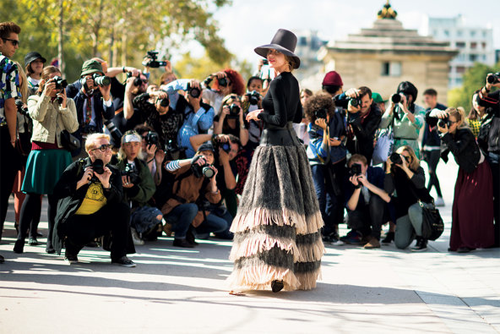
Earlier this year in February during the time of Mercedes Benz Fashion Week, Suzy Menkes wrote an article called “The Circus of Fashion.” You can read it yourself, but, long-story-short, she is criticizing the work bloggers are doing that has turned the industry upside-down and essentially into a circus. There was quite an uproar about the article and many people weighed-in and took their sides either with Menkes or against (some articles of note are The Man Repeller’s rebuttal and Jenine Jacob’s article). So the question I pose is, have the politics changed? Yes.
Let me start by defining what I mean by politics. When fashion blogging came into being there were a couple of names that became really big, really quickly—I’d say about 10 or so international bloggers really impacting the field. However, because the internet is a free-for-all, thousands of women began blogging and many of them became carbon copies, upon carbon copies, of those who started it all. Now as a result, fashion week is filled with women who have only their blogs as their backing that get them into the front rows of the hottest shows, and editors and journalists, who have a “real job” to do, aren’t too pleased about this. So this is where my political analogy comes in (and bear with me because politics is not my forte). Think of the fashion blogging world as the European Feudal system (our government didn’t quite work as well). You have the queen (Anna Wintour, of course), and her advisors; these are the editors who run the fashion game and are the big names in the fashion magazine industry. Under the advisors, you have the nobles, who all fall under the category of journalists, photographers (the documenters, if you will). Under them are the knights; these are the designers, the creators, and any other member of the fashion industry that are there to please the queen and her advisors. Finally, there are the peasants. This is everyone who is interested in fashion but not directly related to the industry—bloggers used to fall under this category. What has happened as of late is that many of the peasants have been treated like knights or nobles, and many of the other royals have not been happy.

Moving away from that analogy, I encourage you to think about why this is occurring. The niche has become oversaturated and it’s getting harder for new bloggers to break through the mold. In my personal opinion, because I do have a fashion blog that I started in 2010 because of inspiration from Emily and Kelly, it is also a very strange niche if you’re on the outside looking in. Women all over take photos of their outfits to document and share. Many women have low-end priced clothes affordable to all, while other women have aspirational blogs with clothes that the average woman may never be able to afford. This has caused a riff in the community because many blog readers feel that once a blogger “makes it big” she loses her integrity and seems to be less of an everyday girl and is labeled a sellout. This has sparked the creation of sites like Get Off My Internets whose sole purpose is to provide forums for anyone to snark about their least-favorite bloggers and what annoys them. Being subjected to that kind of scrutiny can really take a toll on the blogger and what she loves to do.
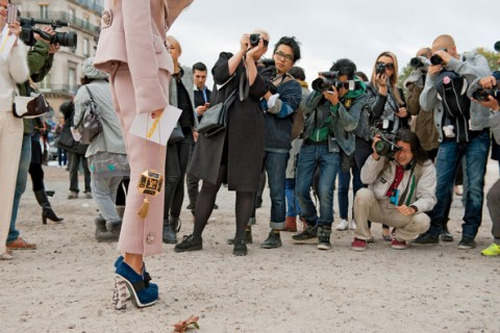
So I’m not saying that I’m for or against fashion blogging. My decision to put my blog on hold comes from the sheer lack of interest to post my outfits and in my growing interest to work on my photography. Some women have made a bad name for the niche which is where the problem lies. Going back to the feudal system, the fashion industry would need to abandon this dichotomy and think of it as a democracy for fashion blogging to become re-accepted as a respectable job (because there are plenty of women making a living from their blogs). This, however, will be hard seeing that many people love the competitiveness of the industry and will never want to see that go. As for my two cents on where fashion blogging will go, bloggers will need to establish from the get-go what their agenda is (be it to become blogger famous, land an advertising contract, or even author a book) and be open and explicit about their monetization policies. Right now, the future of the niche is unclear, but with some restructuring and a new approach, there is hope that integrity can be restored.
Images via and via
0 notes
Text
On Owning Your Niche: Han Starnes
It was a rainy Wednesday morning, and being one of the first cold days in a while I was bundled up and sat waiting for Han Starnes with a warm latte. As she walked in, I immediately noticed the beautiful cream scarf that adorned her neck (I got the feeling she made it herself). I was excited to get started and talk with her about her experiences with fashion—the story quite a unique one.
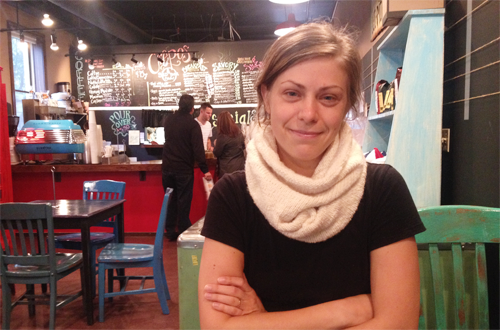
Han (photo by me)
Han Starnes is the owner of the newly-launched Josi Faye, which is her small personal collection of hand-spun scarves and hats. Her products are made right here in her Nashville studio but she ships nationally and also supplies her own yarn to vendors in New York and as far as New Zealand. Her scarves linger around the 200 dollar price range, but for the special care and quality you’re getting, it’s definitely worth it. Josi Faye has received many raving reviews and accolades in just a few short months of having been launched and Han’s shop has been featured in magazines the likes of The Nashville Scene.
We began in New Zealand. She explained to me that for a while she was ”interested in fibers” and different unique materials. While in New Zealand, she found a spinning guild. Now, I’d heard of the idea of a spinning guild but had to get her to elaborate. A spinning guild is a group of women who spin wool and yarn. In the 1970’s the guild that she became a part of was 250 members strong, but when she was there the group had dwindled down to a small 20 or 30 women. From this, you can gather that Han’s craft is quite a special one. Spinning wool by hand is a dying skill and Han had found her niche.
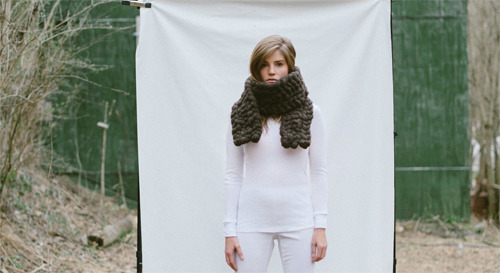
Photo via Josi Faye
After New Zealand Han and her husband came to Nashville to live in this thriving city. Along with this importance of finding a niche, Han pointed out to me that “Nashville is full of people doing things really well.” I agree with this statement and feel that is what makes Nashville such a unique community of artisans and designers. As soon as Han got back to Nashville she got to work with her newfound skill. First, she was filling orders for yarn and wool, hand-spinning the material and selling it to local creators to use. After a while, her wool got picked up in New York and as far away as New Zealand. Han Starnes is proof that with an idea, the skillset, and talent, you truly can go a long way. Of course, no startup or designer goes without having their fair share of struggles. Han had a hard time with first getting her collection to gain any traction, but after teaming up with fellow artisan and friend, Annie Williams, Han and Annie’s leather and yarn bag collaboration put both of their names on the Nashville Map. What started off as making yarn for people grew to become Josi Faye. Josi Faye is Han’s collection of scarves and other hand-spun creations made from locally-grown materials, which she sells through an e-commerce site. I love that home-grown aspect about Josi Faye and many of the other artisan lines in Nashville. There’s such a strong cultural importance in being true to oneself and taking pride in the quality of one’s work here. When talking to Han, I could feel the sincerity in her voice and the special care she takes to make sure that her products are of a certain quality. “It’s the difference between a scarf at H&M and a scarf that is hand-spun; sure the price is different, but the quality is much better as well.” One of the key takeaways I got from my conversation with her is that this “made in Nashville movement” is a strong part of what makes the artisan community one to keep your eye one. There’s really something special here that many larger fashion communities in other cities don’t necessarily have. Nashville is one of those cities where everyone is doing something different and they support other artisans in their field—that’s the key. Whereas in other cities, people may get so wrapped up in the competition, Nashville’s artisan community is about supporting one another.
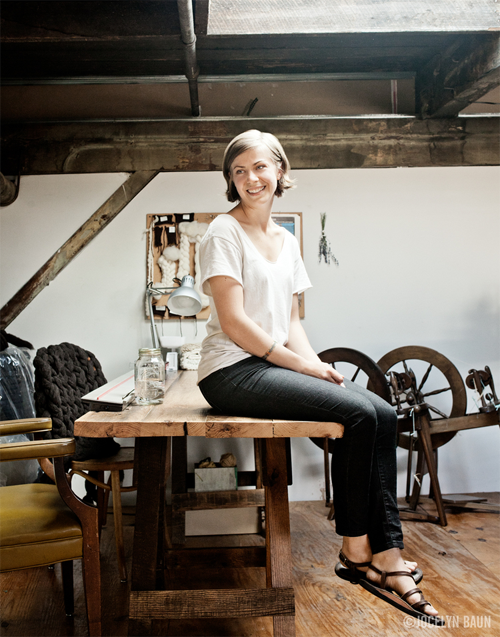
Photo via Jocelyn Baum
Looking to the future, I asked Han about her plans and where Josi Faye is headed.. She plans to attend a few trade shows and make more collections, all the while thinking strategically and vowing to keep things small. She loves the beauty of the fact that her products are handmade with such quality and care, and that pride is reflected in the person that she is. You can talk to Han for five minutes and her humble, kind, and warm personality shines through with vibrant strength.
As for her advice to me? Internships. “Reaching out to people who are willing to have conversations” is the path that can lead to many amazing things. I processed this advice for a minute, looked at her with a smile and said, “just like this conversation we’re having right now.” In that moment I was so thankful to have had the opportunity to speak with Han. Her advice resonated with me because everything starts with conversations. You should never be afraid to speak up and voice your opinions, such as with Han’s move to create better quality products than what’s available on the market, because you never know where it will take you.
#nashville fashion#nashville designers#josi faye#han starnes#spinning#knit#artisan#fashion#photography#journalism
0 notes
Photo
The Nashville Look via Imogene + Willie

2K notes
·
View notes
Text
Using the Internet to Build a Brand
Today, if you search for any emerging designer or brand in Google, some semblance of a Facebook page or website or blog would probably pop up. Thanks to the internet becoming such an accessible and easy-to-use tool, people have become a part of the global relocation to the digital realm that was once only occupied by the super geeks and large companies. Now, having a site or even a simple Facebook page is crucial to your business’ success. Just like the other day when I discussed how the internet’s accessibility lead to the success of the fashion blogging niche, artisan and local designers have been able to reach a broader customer base and attract attention via the internet. Designers here in Nashville with great interactive sites have content that keep you coming back time and time again. I’m going to share with you some of my favorites and why I think owning and up-keeping a site has proven to be successful in helping grow these designers’ businesses.

Image via Imogene + Willie
Think of a brand’s landing page on their website as an elevator pitch. The site design is how that person presents himself and the site’s versatility and usability is that person’s skills and qualifications. Peter Nappi and Imogene + Willie’s sites would get the attention of any higher executive member in a heartbeat. These brands’ captivating sites really grab your attention as soon as you press enter and the page loads. With both, you’re immediately greeted to a white background and a couple of large images on a slideshow as the focal point. A pair of custom-sewn black leather boots. The slide switches. A denim button-down top with a knit scarf. Swipe. A charming video of how that unique denim is made. With their logos emblazoned in the top left corners of the sites, both Peter Nappy and Imogene + Willie’s sites pull the visitor in. At the top you have the options of browsing through their items (the meat of the site), learning about their history, and catching up with them daily on their blogs. It’s features like these that make these sites so great for exactly what their purpose intends—sharing with the visitor who they are.
A few years ago, if you were to ask a business owner if owning a website was crucial, he or she would probably answer with possibly, but probably not—and as for if their site needed a blog, you’d probably get a hearty laugh out of quite a few people. Just as the collaboration between brands and fashion bloggers provides a voice for the brand’s image, a site’s blog has become a place for customers to get a real feel for the personality of the brand and what they’re all about.

Image via Peter Nappi
Why is it that sites like Peter Nappi and Imogene + Willie are so successful? Well for one thing, it’s like I said: easily navigable and beautifully-designed sites are enough to attract even the most internet-confused of people. Look at any of the best sites from Who What Wear, a daily celebrity fashion and style blog, to Into the Gloss, a fashion editorial and interview blog, and you’ll see why this simple, white background, black font, layout design is successful. On another note, it’s the personal feel that comes with the added touch of the brand’s blog. As with any blog, with each post you read you get a sense of the brand’s identity, of their agenda (which could be good or bad), and of the type of customer they’re trying to attract. Imogene + Willie is all about featuring style, the places they travel, and the things they eat which all culminate to give the reader the sense that the focus is all about the local identity and look. With Peter Nappi, there are various posts on family history and the current employees of the brand that come together to promote a strong sense of family values.
So I leave it at that. Take a look at either of these sites and you’ll understand what I mean. Blogging has changed the way that those on the outside or on the margins of the industry have connected to the larger scene, whether you’re a fashion blogger at a small college in the suburbs or an artisan designer in Nashville Tennessee.
#Imogene and Willie#Peter Nappi#blogging#internet#artisan brands#designers#new post#fashion#Nashville Fashion#nashville
2 notes
·
View notes
Text
Fashion Blogging: Changing the Industry With Every Post
The fashion blog. Nowadays, it seems as if every fashion devotee and wannabe industry member has one (myself included). Be it a personal style blog, a roundup of their favorite looks from the latest runway shows, or a weekly trend report, these blogs have increased tenfold in the past 5 years. Anyone familiar with the history of blogging knows why this trend is such a unique concept.
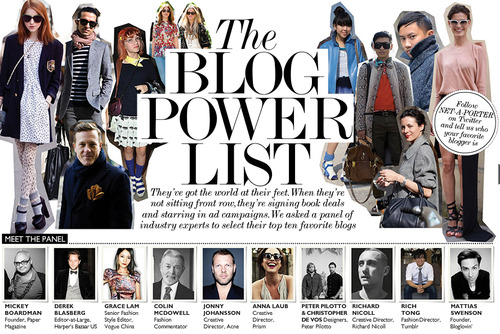
Image via Net-A-Porter
It all started when we realized we could use the internet as our place to represent ourselves, to connect to others like us, and to feel like we are a part of a larger community. This ability to have our own personal blogs allows fashion bloggers to reach out to other people around the world who share the same passions. Not only is this important for the bloggers who benefit from feeding off of the creative minds of other fashion aficionados, but another benefit to these blogs is that the brands and designers get recognition.
From Forever 21 and Urban Outfitters to Zac Posen and Givenchy, fashion blogs have revolutionized the industry by giving these brands a voice. What originated as a series of voiceless and slightly emaciated, but recognizable models who took the runways with poise and grace has transformed to focus on those who can really reach out to potential customers and make the brands accessible. Personal style bloggers have a new kind of pull and impact in the industry that wasn’t there before. By posting their daily outfits and “looks” on their blogs, they have attracted great followings and these followers are interested in who the bloggers are wearing. This is where brands benefit the most. When blog readers see that these brands are in fact wearable, they are often more likely to buy them. It’s kind of like a monkey see, monkey do affect.
What started with bloggers like Rumi Neely of Fashion Toast and The Blonde Salad (Chiara Ferragni) has grown into a larger niche that is now becoming oversaturated. Before this happened, however, bloggers like Rumi, Chiara, and one of my personal favorites, Julie Sarinana, grew such big followings that this sparked a new age of fashion blogging that involved brands and bloggers working together. Now, a lot of these “big name bloggers” experience all of the fashion industry events and perks that were only available to those directly working in the business and creative side of the industry. Bloggers have been flown to fashion weeks, blogger conferences, and even brands’ headquarters for photo shoots and commercials—the list goes on and on. While some on the outside may see this as an extravagant and almost unnecessary way to get more people following their brand, the numbers do not lie and bloggers have proven to be a positive benefit to designers and brands.

Image via Fashion Toast
Even more, blogs that started as personal daily logs to share what people are wearing have morphed into blogs that are branding themselves as business. A sort of dichotomy has emerged as well. There are the bloggers that are just starting out and have about 10,000 page views (the number of times someone visits a page) a week or less. There are those in the middle, who have a big enough following where they are recognized as influential in the community and have a little bit of pull, and then there are those with over 50,000 page views a week and are recognized globally for how they are impacting the industry. These blogs are effective because of the pretty pictures, the color combinations, the clothes--all of the aspects that make up a major fashion publication like Vogue, but with a personal touch. It’s the visual that keeps people coming back and it’s the personalities of these bloggers that make them stay.
Criticisms and stereotypes of fashion bloggers aside, this new niche of influencers matters because fashion bloggers have changed how industry professionals reach the masses. These voices are sort of like the middle man or the voices to the people by the people. They make it so that people like me, with a small fashion blog, can be and feel like they are a part of something bigger than themselves. It helps me to stay in-the-know and this is an invaluable asset in the industry. The bottom line is that fashion blogging has opened up doors and opportunities for so many that were not able to be included before.
While fashion blogging has become so effective, as I mentioned before, it has become an oversaturated niche. While the work of fashion bloggers is praised by many, there are many more people who criticize this type of blogging for being a vain mean for a self-esteem boost. While this sometimes may be the case, it will be interesting to see what the future will hold for this niche as it continues to grow.
#fashion blogger#fashion blogging#the art of blogging#fashion niche#rumi neely#the blonde salad#fashion blog
1 note
·
View note
Text
Margaret Mead in Manolo's: A Chat with Libby Callaway
“I always wanted to be in New York my whole life,” Libby smiled and sat back in her seat as she steeped her tea from the new coffee shop, Crema, in Nashville. “My interests have always been where fashion and music intersect.” Libby Callaway is a self-proclaimed “Margaret Mead in Manolo Blahniks,” and it’s a well-deserved title at that. She has literally done it all. I sat down with Libby to pick her brain about the current state of the Nashville fashion culture, where it’s been, and where it’s going. Nervous, as this was my first real interview with anyone, ever, Libby put me at ease with her warm and laid-back personality. So we dove right in.
“I can write, that’s my thing.” These are the words Libby proclaimed as she dove into the story of her in a nutshell. As a journalism major (who received her Masters from NYU) Libby started her career as a fashion reporter for the NY Post in the late 90’s and with this was able to cover fashion weeks around the globe doing “all of the things that fashion people do.” What she loved about her job as a journalist is that she got to talk to people about the things that she loved—and this was her living. This career bliss, though it takes hard work to get where she did, resonated in the smile in her voice. Fast forward a few years and she found herself yearning to go to Nashville. She grew tired of newspapers and went freelance (a column in Glamour, working as a stylist, and selling vintage clothes)—I told you she’s done it all.
I proceeded to ask Libby about the history of Nashville’s fashion culture. It is true that before you truly understand something, you must learn all about its roots, its past, and its origins. She admitted to me that before Matt and Carrie arrived (the owners of Imogene and Willie) “we weren’t really on the map” in the fashion industry. Nashville was known for the fashion of its country music stars—the Carrie Underwood’s and Keith Urban’s—dressed in a style that was heavily influenced by designer Manuel. A designer of the “old regime” in Nashville’s young, but quickly growing fashion industry, Manuel is known for his glitzy rhinestone designs. It’s amazing what two people setting up shop in a new neighborhood can do to a town—and I’ve seen this change in the four years that I’ve put down roots in Nashville. Just as Libby described, Matt and Carrie Eddmenson came onto the scene, at the right time and the right place it seemed, as Nashville quickly underwent a renaissance of sorts. Suddenly, artisan stores and designers with their own unique visions began popping up and creating a new aesthetic for Nashville. “Do a collaboration with Matt and Carrie,” Libby once said to a designer friend, “that’s what they do. They are tastemakers.” Tastemakers—that stuck with me. The idea that these artists are more than just that—they are the creators that are reinventing Nashville’s fashion aesthetic. Matt and Carrie started this “Nashville Look.” The look is modern and accessible. It’s the basics—the blue jeans, v-neck tees, and the simple items in a wardrobe that are far from flashy, but put together create a look completely unique from the LA or New York looks. “People get it. People want Nashville to dress like Matt and Carrie.” That kind of influence is a powerful thing.
That’s when I understood why it was so crucial that I talk to Libby first before featuring anyone else on here. As I said before, the roots of a story are what bring understanding, and it was as if all of a sudden, halfway through our interview, that things just clicked.
This brings us to the now. Libby gave me insight on how Nashville is making a name for itself among LA and New York, and where Nashville should be headed in the next couple of years. Libby currently works for Emil Irwin, Billie Reid, who is based out of Florence, Alabama, and is working on a number of other projects and collaborations. She compared Nashville to LA and New York with one simple word—economics. It’s simply more accessible here and it’s easier for a young designer to set up shop than it would be in New York. This, in part, is what has led to these storefronts that are like unique experiences or trips into the world of these creators. It would have been hard for some of them to have started if they tried to begin in New York, the space simply would not be the same. This is what she hopes to see come about in the future—infrastructure change that will make it easier for new designers to hone in on their craft. Nashville lacks the production materials and utilities that other larger cities have, and to have that here would truly revolutionize the scene.
Fashion is a way of bringing communities together and each person involved, especially in a smaller fashion community like Nashville, brings a special and unique detail. Libby gave me a list of her favorites—Phillip Nappi of Peter Nappi, Poni Silver of Black by Maria Silver, and Susan Sherrick of S.E. Sherrick Leatherworks, to name a few. It is important now more than ever that we pay attention to these up-and-coming designers and their unique artisan crafts. I hope to feature each and every one of these designers and their craft on here in hopes of grasping at the details of their stories and sharing their insights with you, just like I did with Libby’s.
“Continue talking to people. This will help to refine your vision of what you want to do. It’s almost as important to figure out what you don’t want to do. Do this and you can make yourself truly valuable in the industry.”
0 notes